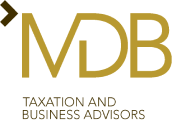As the economy adjusts to the removal of most COVID-19-related government support measures, coupled with the slow national vaccination rollout and mostly closed international borders, there is no doubt that many Australians are facing financial difficulties in the immediate short term. If you have a tax debt that is compounding your financial difficulties, there may be a solution – you may be able to apply to be permanently released from the debt, provided you meet certain criteria.
To be released from a tax debt you need to be in a position where paying those debts would leave you not able to provide for yourself, your family or others you’re responsible for. This includes providing items such as food, accommodation, clothing, medical treatment and education.
When someone applies to be released from tax debt, the ATO will look at their household income and expenditure to determine if they have the ability to pay all or part of the debt and will set up a payment plan if required. It will also look at the person’s household assets and liabilities including their residential home, motor vehicle, household goods, tools of the trade, savings for necessities, collections etc. and identify whether the sale of a particular asset could repay all or part of the tax debt.
Even when the ATO has established that the payment of a tax debt would cause the taxpayer serious hardship, it will look at other factors within that person’s control that may have contributed to this hardship. For example, it will consider how the tax debt arose and whether the person has disposed of funds or assets without providing for tax debts, as well as their compliance history. It will also check whether the person may have structured their affairs to place themselves in a position of hardship (eg by placing assets in trusts or related entities).
Debts that the ATO can consider for release include income tax, PAYG instalments, FBT and FBT instalments, Medicare levy and surcharge amounts, certain withholding taxes, and some penalties and interest charges associated with these debts.

